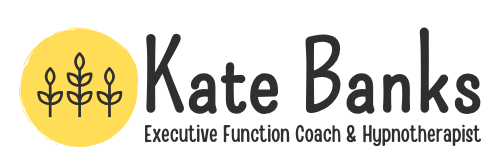Why those scribbles might be the smartest thing your brain does
How spontaneous drawings soothe stress, sharpen focus, and support executive function – for both adults and young people.
I remember having to rewrite an essay at school because I’d absentmindedly doodled in the margins. Over the years, those spontaneous squiggles and shaded shapes found their way into meeting notes, especially during those project reviews that went on FOREVER.
Whether it’s your young person zoning out during revision, or you in a never-ending Zoom meeting, doodling is often dismissed as a distraction. But the science says otherwise – doodling actually helps you to focus!
As a coach working with both adults and young people with busy, buzzing, or neurodivergent brains, I’ve seen the power of doodling during our sessions. Clients relax into sessions more easily and open up more easily.
Let’s take a closer look at why those seemingly mindless marks can be an unexpectedly brilliant support for the brain.
Why doodling is more than a distraction
Although it might seem like a mindless or bad habit, doodling is actually amazing for your brain!
- It supports focus and executive function.
- It calms the nervous system.
- It boosts creative problem-solving.
In fact, multiple studies have shown that doodling helps ease stress, enhance memory, and improve emotional regulation.
Sunni Brown, author of The Doodle Revolution, puts it beautifully:
“To doodle: to make spontaneous marks to support thinking… to use simple visual language to activate the mind’s eye and support creativity, problem-solving, and innovation.”
If you want to read more about The Doodle Revolutionary’s Manifesto check it out here

Why doodling works: the neuroscience bit
When we doodle, especially with repetitive or rhythmic shapes, we activate the Default Mode Network (DMN) in the brain. This network is typically active during daydreaming, rest, meditation, and light hypnotic states. It’s responsible for things like:
-
Self-reflection and memory consolidation
-
Creative thinking and problem-solving
-
Emotional regulation and mental resets
So doodling doesn’t mean you’re zoning out. More often, it means you’re tuning in – just through a gentler, more indirect route.
In fact, research shows that people who doodle while listening retain more information than those who don’t.
5 ways doodling supports both adults and young people
1. It calms a cluttered mind
Doodling gives form to swirling thoughts. It can help adults process complex emotions or to-do lists, and offers young people a quiet outlet for school stress, social pressure, and identity exploration.
2. It strengthens executive function skills
The same brain regions used in doodling are also involved in working memory, flexible thinking, and emotional control. Try it before or after cognitively demanding tasks (like revising, writing, or decision-making).
3. It activates your brain’s reward pathways
A 2017 study found that doodling (even more than colouring or free drawing) stimulates areas of the brain linked to pleasure and motivation. It simply feels good, which can be deeply regulating for anxious or overwhelmed brains.
4. It creates a sensory anchor
The tactile motion of pen on paper provides consistent, low-pressure sensory input. For kids with sensory sensitivities or adults feeling overstimulated, this rhythmic motion can help them stay present without needing to “sit still and be quiet.”
5. It bypasses perfectionism
There’s no right or wrong way to doodle. No judgement. No grades. Just visual play. That makes it a powerful tool for both anxious adults and kids who are afraid of “getting it wrong.”

For adults: Permission to pick up a pen
If you struggle to switch off, or find your thoughts racing even during downtime, try keeping a notebook nearby for spontaneous scribbles.
You don’t need to be artistic.
Lines, spirals, dots, geometric shapes – anything repetitive and rhythmic can help.
Try doodling:
- While waiting for a call appointment
- During a long meeting or podcast
- As part of your bedtime wind-down
Because doodling is visual, tactile, and emotional, it activates multiple learning channels and offers your brain a place to rest and reset.
For young people: Doodles are data (and relief!)
If your young person doodles during class, homework, or coversations, don’t be too quick to redirect them. Those marks may be helping them regulate, focus, and engage.
Encourage doodling during:
- Listening activities (audiobooks, revision videos)
- Transitions between homework blocks
- Bedtime or wind-down time
- Coaching or therapy sessions
It’s a quiet, adaptive way to support their nervous system, especially for neurodivergent learners who need to fidget to focus.
Create a doodle friendly environment
- Leave paper and pens in accessible spots – by the bed, on the kitchen table, in a bag for car rides
-
Model it yourself – doodle while talking or listening, and talk about how it helps you focus or feel calm
-
Reframe it: This isn’t wasting time => It’s helping your/my brain work.
Scribbles are self-regulation
In a world full of pressure to focus harder and do more, doodling offers a quiet form of rebellion, and deep self-care.
It’s not a distraction. It’s a valuable strategy to help your brain reset and find clarity and calm – whatever age you are.
So next time you (or your young person) start doodling… let it.
It’s not wasting time – it’s working with your brain.

